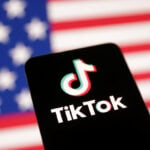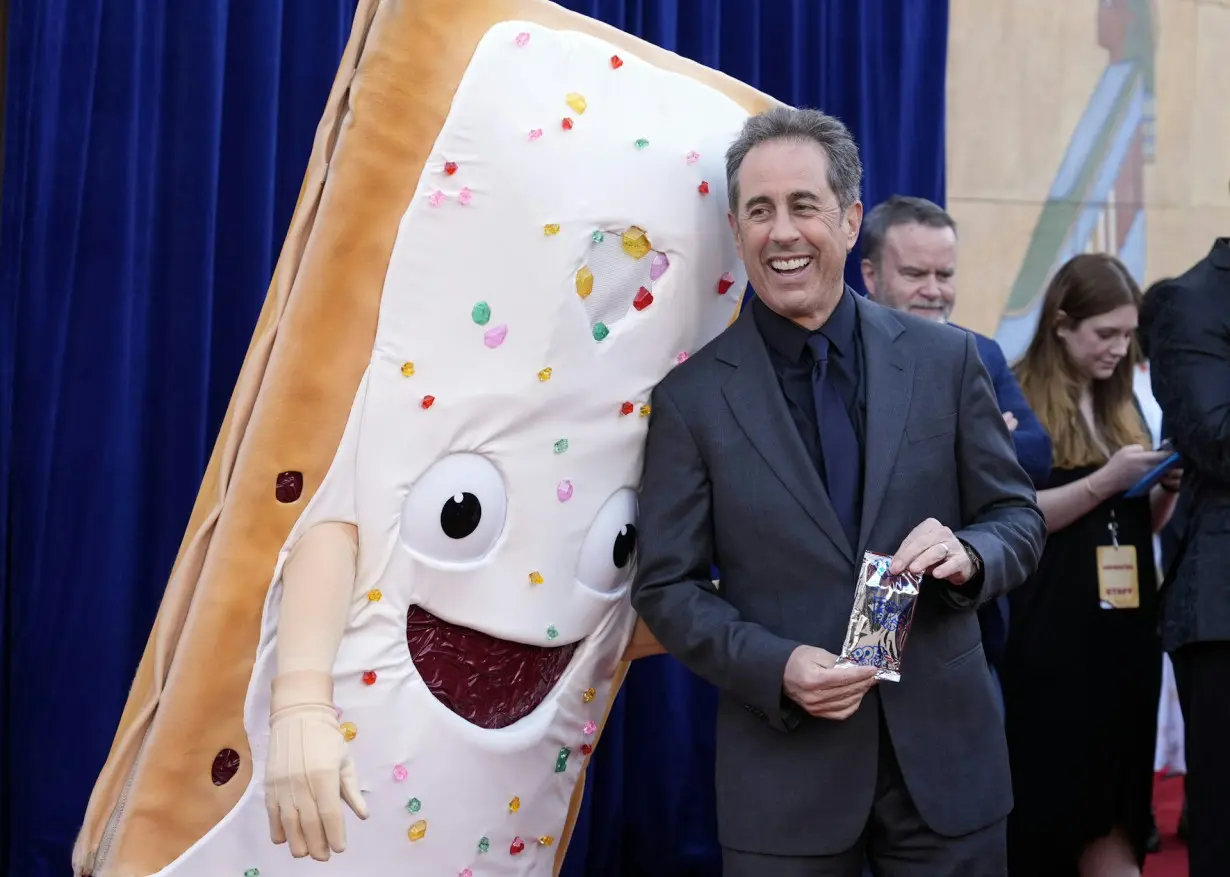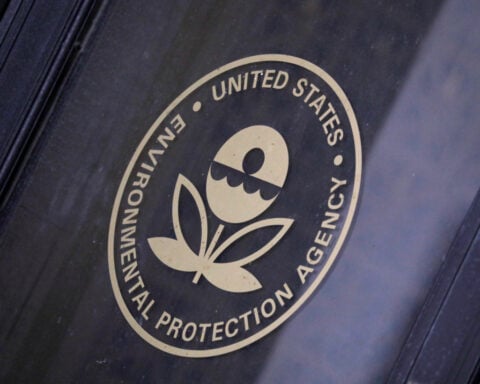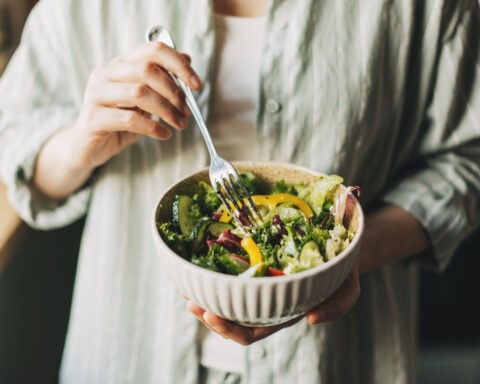While Jerry Seinfeld, Melissa McCarthy, Amy Schumer and Hugh Grant got top billing, sweet breakfast foods from the 1960s are arguably the real stars of the recent movie “Unfrosted,” a comedy loosely based on the invention of Pop-Tarts.
What’s more, many of those breakfast products from the movie are still household names. When I was a child, I too enjoyed some of the sugary cereals featured in “Unfrosted,” and I ate Pop-Tarts too.
In fact, I still have a box or two of these cereals squirreled away at my house, even though I’m well into adulthood, working as an assistant professor of nutrition and dietetics.
There are reasons why these foods are so popular – and why the cereal aisle in your supermarket looks much the same as it did decades ago. Their sweet taste, simple ingredients and powerful marketing promoting memorable cartoon mascots still resonate within us, even after our childhood is long over. No wonder projected revenues for the cereal industry in 2024 are US$22.5 billion for the U.S. alone, and global revenue is predicted to increase from $81.6 billion in 2024 to $139 billion in 2033.
The sweet appeal of sugary cereals
In a landmark study, researchers in 2006 gave rats a choice between saccharin-sweetened water or cocaine. Ninety-four percent of the rats preferred the saccharin. And this included a group of cocaine-addicted rats – 100% of them chose the saccharin.
Technically though, sweetness is not considered addictive. Rather, humans have an innate and universal preference for sweet tastes – particularly children, who tend to prefer sweeter foods than adults.
But that’s not all of their appeal. Dating back to the time depicted in “Unfrosted,” the marketing campaigns for breakfast foods have been enormously successful.
Most Americans are familiar with the Snap, Crackle and Pop kids, Tony the Tiger, the Lucky Charms leprechaun, the Trix rabbit, Toucan Sam from Froot Loops and dozens more.
More recently, millions watched when the first edible sports mascot – an enormous Pop-Tart – was devoured by the victors of the Pop Tarts Bowl, held in December 2023.
The commercial success of these foods, however, does not necessarily correlate to their nutritional quality.
Added sugar is the villain
Although the sugar content of sweetened breakfast cereals has declined from 45.9% percent of weight in 1985, many cereals today still contain a lot of sugar, with more than 30% of their weight coming from sugar.
The next time you’re in the cereal aisle, take a few minutes to look at the sugar content of your favorite brands, especially those you enjoyed as a child. Many of these cereals will have 10 to 14 grams of “added sugar” per serving, and some will have more. Some types of frosted Pop-Tarts have as much as 30 grams of added sugar per serving, which is two Pop-Tarts pastries.
Added sugars are empty calories; they are added to the product during the manufacturing process to make it taste better. This is in contrast to naturally occurring sugars, such as those in fruits or other whole foods that provide nutrients. The Dietary Guidelines for Americans, published by the U.S. Department of Agriculture, says added sugar intake should be no more than 10% of your total calories. The World Health Organization recommends even less added sugar – only 5% of calories.
Suppose, then, you take in 2,000 calories per day. Ten percent of that is 200 calories. One gram of sugar provides 4 calories. According to the U.S. guidelines, that means you should get no more than 50 grams of added sugar per day. Eat a serving of cereal with 14 grams of sugar, and you’re almost 30% of the way there. Or go with the World Health Organization recommendations – 5% of a 2,000-calorie diet is 25 grams per day – and you’re more than halfway to the daily limit.
That said, the less added sugar one eats, the better. Zero is best.
The science of sugar
The glycemic index shows how much a particular food affects blood sugar. Foods with higher numbers increase blood sugar more than foods with lower numbers.
A food with an index below 55 is low glycemic; a high one, above 70. Pure glucose, a simple sugar, has a maximum glycemic index value of 100.
Although many cereals contain high amounts of added sugar, some also have a fair amount of fiber – and fiber lowers blood sugar. But even with this fiber content, most sweetened cereals have a value of 70 or more.
Other breakfast foods, like plain Greek yogurt and bananas, have values of roughly 35 and 55, respectively, making them low glycemic.
Health effects
High-glycemic, simple carbohydrate foods like sweet cereal result in higher blood lipid levels, increased hunger and greater amounts of release of insulin. These are all factors for the development of heart disease and type 2 diabetes.
This happens because high blood sugar increases blood pressure. It also increases the formation of advanced glycation end products, which are molecules formed from sugars that can stiffen blood vessels and increase inflammation.
If added sugar intake exceeds 13% of total calories – on a 2,000 calorie diet, that’s 260 calories, or 65 grams of added sugar a day – it increases your chances of dying from cardiovascular disease by 39%. And that’s only one sugary bowl of cereal on top of the 50 grams the USDA says is the acceptable limit.
Conversely, diets with low-glycemic index values are related to improved markers of blood sugar, blood lipids and reduced body weight.
Reducing sugar intake
A good place to start when trying to reduce sugar intake is to read the Nutrition Facts label on the food’s package, which lists the added sugar content.
Added sugars can also be found on the ingredients list, often labeled as glucose, fructose, maltose or sucrose. Or they may appear as other food ingredients, such as molasses, honey, jam, concentrated juice or syrup. Or it may be listed simply as sugar.
Recognizing the differences between serving sizes and the actual portion size is also critical. A serving size is what’s described on the Nutrition Facts label; a portion size is how much you actually serve yourself.
Particularly when it comes to breakfast cereal, people consistently serve themselves more than the serving size, which means you’re taking in more sugar than you think. People who free-poured cereal from a box into a bowl overestimated portion sizes of nine of 10 types of cereal, with the sole exception a style of cereal where the food is already portioned. I am guilty of this, as I fill my bowls at home to the top.
The amount being overserved varied from an additional one-sixth of a serving to more than one whole serving, resulting in 0.5 to 7 grams of additional sugar.
One way to fix this is to choose smaller bowls and spoons. This is a neat little trick, and research shows it actually works. Another way is to measure the serving size with a measuring cup.
Currently, the Food and Drug Administration is discussing ways to regulate ultra-processed foods. Generally speaking, these are foods containing numerous ingredients formulated by industrial techniques. Ultra-processed foods include sugar-sweetened foods, such as many breakfast cereals.
It’s possible the FDA will demand mandatory reductions in added sugar content, similar to the current voluntary reductions advocated by the National Salt and Sugar Reduction Initiative, which is to reduce the mean percent weight of the sugar content of cereals by a little more than 5% by 2026.
But those reductions may be a long time coming. It took more than three years for the FDA to ban partially hydrogenated oils from food manufacturing after they were no longer recognized as safe. For now at least, your cereal aisle will continue to look much the same as it did in “Unfrosted.”

Nathaniel Johnson receives funding from the United States Department of Agriculture, the National Institutes of Health, and the Health Resources and Services Administration.
Source: The Conversation

 Stock market today: Asian stocks mixed ahead of US inflation data
Stock market today: Asian stocks mixed ahead of US inflation data
 TikTok seeks to reassure U.S. employees ahead of Jan. 19 ban deadline
TikTok seeks to reassure U.S. employees ahead of Jan. 19 ban deadline
 US won't seek charges in unarmed Black motorist Ronald Greene's fatal 2019 arrest
US won't seek charges in unarmed Black motorist Ronald Greene's fatal 2019 arrest
 Euro zone households could increase consumption, ECB chief economist says
Euro zone households could increase consumption, ECB chief economist says
 Foreigners sold South Korean equities last month by most since early 2020
Foreigners sold South Korean equities last month by most since early 2020
 As fires ravage Los Angeles, Tiger Woods isn't sure what will happen with Riviera tournament
As fires ravage Los Angeles, Tiger Woods isn't sure what will happen with Riviera tournament
 Antetokounmpo gets 50th career triple-double as Bucks win 130-115 to end Kings' 7-game win streak
Antetokounmpo gets 50th career triple-double as Bucks win 130-115 to end Kings' 7-game win streak
 No 97 Laura Siegemund upsets Olympic champion Zheng Qinwen at the Australian Open
No 97 Laura Siegemund upsets Olympic champion Zheng Qinwen at the Australian Open
 Jerry Seinfeld, who wrote and directed "Unfrosted," poses next to a Pop-Tarts mascot at the Netflix film's premiere in Hollywood, Calif., in April 2024.
Jerry Seinfeld, who wrote and directed "Unfrosted," poses next to a Pop-Tarts mascot at the Netflix film's premiere in Hollywood, Calif., in April 2024.







